PAVILION OF TURKEY AT THE 55TH INTERNATIONAL ART EXHIBITION – LA BIENNALE DI VENEZIA
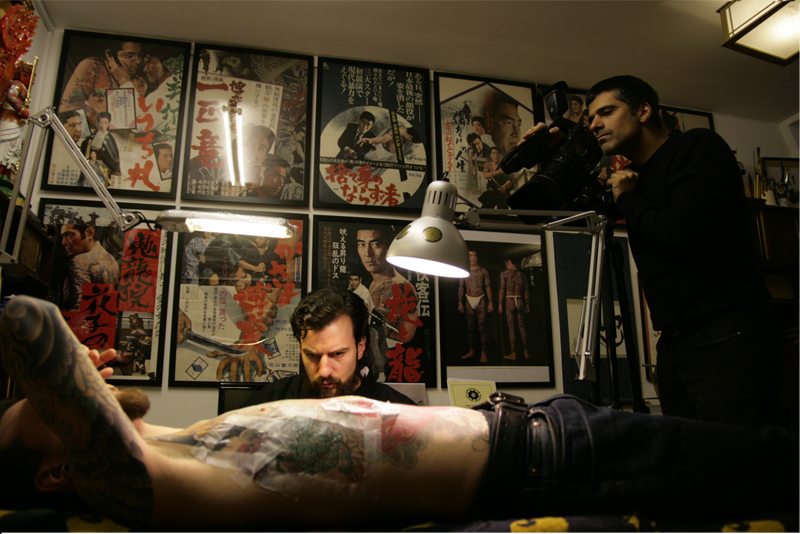
Pavilion of Turkey at the 55th International Art Exhibition,
La Biennale di Venezia
The Pavilion of Turkey at the 55th International Art Exhibition, la Biennale di Venezia will present
Ali Kazma’s new video series “Resistance” from 1 June to 24 November, 2013. In “Resistance”,
Ali Kazma explores the discourses, techniques and management tactics developed for the body today and focuses on the interventions and strategies that both release the body from its own restrictions and restrict it in order to control it. Curated by Emre Baykal, the Pavilion of Turkey is located at Artiglierie, Arsenale, in the main venue of the biennale.
The Pavilion of Turkey is organised by the Istanbul Foundation for Culture and Arts (İKSV), sponsored by FIAT and realised under the auspices of Ministry of Foreign Affairs and Ministry of Culture and Tourism, the Republic of Turkey with the contribution of The Promotion Fund of the Turkish Prime Ministry.
The Pavilion of Turkey at the 55th International Art Exhibition, la Biennale di Venezia was presented at a press meeting on Monday, 25 February at Salon İKSV. The artist Ali Kazma, the curator Emre Baykal, the General Manager of İKSV Görgün Taner and CEO of TOFAŞ Kamil Başaran on behalf of Fiat, participated in the meeting.
The CEO of Tofaş Kamil Başaran delivered a speech on behalf of Fiat: “As Fiat, a brand of Tofaş which has been leading the development of Turkish automobile industry and economy in the past 45 years, we are proud to be the sponsor of this precious art event in 2013, as in 2011.”
Following the speeches, Emre Baykal and Ali Kazma gave detailed information on the conceptual framework of the Pavilion of Turkey and the project “Resistance”.
Emre Baykal, who has collaborated with Ali Kazma on the occasion of several exhibitions and projects since the 7th Istanbul Biennial, 2001, stated that as a multi-channel video installation, “Resistance” grew out of an earlier series, “Obstructions” (Engellemeler) the artist has produced since 2005. In “Obstructions”, Ali Kazma has carried out research into the tense equilibrium between order and chaos, and life and death, into the efforts of the human being to hold together a world inclined towards disintegration and destruction, and the diversity of physical production developed to achieve this, and what such production might mean in the context of human nature. “Resistance” explores how the body is shaped today via scientific, cultural and social tools and how as a performance site it is repeatedly re-produced. In other words, “Resistance” conveys the productive activity of the body as a creative force directly onto the body itself; the producer and the produced, the shaper and the shaped this time unite in the materiality of the body.
Ali Kazma’s work “Jean Factory” from the “Obstructions” series was shown at the press meeting to illustrate how “Resistance” relates to the previous works of the artist.
Ali Kazma explained that the works in the “Resistance” series to be premiered in Venice record the processes that both construct and control the body, and explore the human being’s struggle to break the social, cultural, physical and genetic codes of the human body in order to render it perfect, as well as the processes that transform the body into the conveyor of new symbols and meanings. The almost one year-long filming process of the project was carried out in various parts of the world, in different settings and with different subjects. In “Resistance”, Kazma attempts to read the complex meanings and the enigma produced by the body as a physical and conceptual space from within a broad network of relations. Amongst the various settings of “Resistance” are a film set in Paris, a prison in Sakarya, a school and a hospital operating room in Istanbul, a university where robot production and experimental research is carried out in Berlin, a medical research laboratory in Lausanne, a tattoo studio in London, and a theatre hall in New York.
A book will accompany Ali Kazma’s video installation “Resistance”. Published by Yapı Kredi Publications, the book is designed by Esen Karol who has also designed the communication materials of the project. The book will be available at the launch of the pavilion with two separate editions in Turkish and English and will subsequently be sold in major bookstores.
The Pavilion of Turkey at the 55th International Art Exhibition, la Biennale di Venezia will inaugurate with the opening ceremony to be held on Thursday, 30 May. The biennale will be open for visitors from Saturday, 1 June onwards until 24 November 2013.
For more information: www.iksv.org/en
For videos from the press meeting: https://files.secureserver.net/0f67EteEfFbO5g
ON “RESISTANCE”
In the video series he has been producing since 2005 under the heading of “Obstructions”, Ali Kazma has carried out research into the tense equilibrium between order and chaos, and life and death, into the efforts of the human being to hold together a world inclined towards disintegration and destruction, and the diversity of physical production developed to achieve this, and what such production might mean in the context of human nature.
The “Obstructions” series was instigated by a 37-day performative work Ali Kazma realized for “Istanbul Pedestrian Exhibitions II: Tünel-Karaköy”, an exhibition co-curated for public space by Fulya Erdemci and Emre Baykal in 2005. In this work titled “Today”, Kazma had tracked down micro-level production and repair activities within the daily life of the neighbourhood where the exhibition took place. He first recorded and edited these activities with his camera during the day and later projected them onto a shop window facing Tünel Square in the evening on the same day. After the working hours ended and the time for rest arrived, the shift of Kazma’s work started, conveying the events of the day into the night throughout the exhibition period. Employing a small shift in time as its presentation strategy, this performative work articulated the artist’s own physical and mental labour as part of the daily routine of the neighbourhood and rendered visible in fragments all kinds of production, maintenance and repair activities that we often pass by without paying any attention –or do not see at all, because they are carried out indoors. “Today” brought, into its own field of research, the human body at work in the broadest sense of the word, the tools that function as the extensions of the body, the common gestures and acts of working bodies, and the grammar of its language formed via similarities between these gestures and acts.
The “Obstructions” series, presently comprising 16 works, was triggered by the idea of revisiting the fragments that made up “Today” stripped of their urban/spatial context; and expanded by incorporating other categories of production that were not included in “Today”. For the varying contexts of every new exhibition, the series is installed in a different combination of its constituent works, all projected simultaneously. This opens up new possibilities for thought across a network of relationships formed between the body, labour and production. The effort to resist, implied in the title of this series, references the fundamental scientific truth that everything must eventually disintegrate, and perish. Ali Kazma’s ‘obstructions’ point towards the sum of production and repair activities as the human being’s endless effort against this absolute process of annihilation –and ultimately death– in order to at least decelerate and delay this process.
The majority of works in the “Obstruction” series have a focus on the effort human beings exert for the continuity, comfort, measurement, control, maintenance, repair etc. of the body. The field of execution, or the final product of such activities could either be a material object that supports or supplements the body (“Jean Factory”, “Rolling Mills”, “Clock Master”, “Cuisine”), while at other times the body becomes the site of performance (“Dancer”, “Painter”), or operation itself (“Brain Surgeon”).
In precisely the same manner that “Obstructions” grew and emerged from within “Today”, “Resistance” is now growing out from within the “Obstructions” series; and explores how the body is shaped today via scientific, cultural and social tools and how as a performance site it is repeatedly re-produced. In other words, “Resistance” conveys the productive activity of the body as a creative force directly onto the body itself; the producer and the produced, the shaper and the shaped this time unite in the materiality of the body.
During the almost one year-long filming process of “Resistance”, Ali Kazma entered a great variety of spaces to record the processes that both construct and control the body, and explored the human being’s struggle to break the social, cultural, physical and genetic codes of the human body in order to render it perfect, as well as the processes that transform the body into the conveyor of new symbols and meanings.
Complimenting each other within the composition of a single installation, the videos brought together under the general title “Resistance” will explore the construction of the material body in three different layers. As Amelia Jones states in her article titled “Decorporealization”, if we were to imagine the body as a discardable shell, but at the same time as the physical enactment and guarantor of the self (1) then Ali Kazma’s camera not only looks at this resistant shell and the interventions applied to it, but it also manages to descend into what lies beneath this surface, within the shell, into the invisible, or in other words, into the fabric that both holds it together and causes it to dissolve, into the field of flesh in its ultimate material state. A third layer then emerges as the institutional/spatial shells that surround and shape the body, discipline it, constantly inspect it and subject it to protection and surveillance.
In “Resistance”, Ali Kazma explores the discourses, techniques and management tactics developed for the body today and focuses on the interventions and strategies that both release the body from its own restrictions and restrict it in order to control it. He attempts to understand the changes the body undergoes not only via the subjects before his camera, but also via the spaces that stage the reconstruction of the subject. The metaphorical perception which since Ancient Greece sees the body as the coffin, cage, or cell that confines the mind or the spirit takes “Resistance” into spaces where bodies are controlled, disciplined and restricted –yet almost no body is seen within the architectural confines recorded by Ali Kazma.
In his radio lecture titled “Utopian Body” Foucault describes this cage, coffin or cell –the body– that constantly draws us towards materiality, and therefore towards death and mortality, first as the obstacle to utopia, and then as the absolute place of utopia’s birth:
“This place that Proust slowly, anxiously comes to occupy anew every time he awakens: from that place, as soon as my eyes are open, I can no longer escape. Not that I am nailed down by it, since after all I cannot only move, shift, but I can also move it, shift it, change its place. The only thing is this: I cannot move without it. I cannot leave it there where it is, so that I, myself, may go elsewhere. I can go to the other end of the world; I can hide in the morning under the covers, make myself as small as possible. I can even let myself melt under the sun at the beach –it will always be there. Where I am. It is here, irreparably: it is never elsewhere. My body, it’s the opposite of a utopia: that which is never under different skies. It is the absolute place, the little fragment of space where I am, literally, embodied (faire corps). My body, pitiless place.” (2)
This body that we will never be able to escape from, imprisons us within its own materiality, within the infinite possibilities of a finite place on the one hand, while on the other it is also the space where all utopias are constructed:
“For me to be a utopia, it is enough that I be a body: All those utopias by which I evaded my body –well they had, quite simply, their model and their first application, they had their place of origin, in my body itself. I really was wrong, before, to say that utopias are turned against the body and destined to erase it. They were born from the body itself, and perhaps afterwards they turned against it.” (3)
Instead of adopting a reductionist modernist approach that challenges the mystery of the body and tries to understand it almost as an anatomical object, “Resistance” attempts to read the complex meanings and the enigma produced by the body as a physical and conceptual space from within a broad network of relations. In this multi-channel video installation to be premiered at the Venice Biennale, Ali Kazma researches the networks that shape the body within social, cultural, economic, political, scientific and mental layers. The relationship between “being a body” and “having a body” (4); and the tension that emerges within the infinite possibilities and borders of the body as a field of information, control and performance are explored under a range of diverse definitions and perceptions such as “material body”, “social body”, “body under surveillance”, “disciplined body”, “body at work”, “speaking body”, “the lived body” and “the sexual body”.
Ali Kazma is carrying out the filming of this comprehensive project in various parts of the world, in different settings and with different subjects: A film set in Paris, a prison in Sakarya, a school and a hospital operating room in Istanbul, a university where robot production and experimental research is carried out in Berlin, a medical research laboratory in Lausanne, a tattoo studio in London, and a theatre hall where rehearsals of Hamlet are held in New York, just to name a few.
“Resistance” provides important clues regarding the direction Ali Kazma’s artistic production is likely to evolve as it promises to expand in time in order to include within its scope the infinite knowledge that counts the body as its source, both as a real and restricted image, and as a field of infinite possibilities.
Translated into English by Nazım Dikbaş
(1) Amelia Jones, “Decorporealization” in Sensorium: Embodied Experience, Technology, and Contemporary Art, ed. Caroline A. Jones (Cambridge: MIT Press, 2006), 133–136.
(2) Michel Foucault, “Utopian Body” in Sensorium: Embodied Experience, Technology, and Contemporary Art, ed. Caroline A. Jones (Cambridge: MIT Press, 2006), 229.
(3) Michel Foucault, “Utopian Body” in Sensorium: Embodied Experience, Technology, and Contemporary Art, ed. Caroline A. Jones (Cambridge: MIT Press, 2006), 231.
(4) Alexandra Howson, The Body in Society: An Introduction (Oxford: Polity Press, 2013), 6.
BIOGRAPHIES
Ali Kazma
Born in 1971, Istanbul, Ali Kazma completed his undergraduate studies in the United States. After briefly studying photography in London, he returned to the US to study film. He received his MA from the The New School in New York City where he worked as a teaching assistant. Ali Kazma was granted the 2001 UNESCO Award for the Promotion of the Arts and received the 2010 Nam June Paik Award given by North Rhine-Westphalia Art Foundation in the field of media art, with his “Obstructions” series that he had been working on since 2005. The artist whose videos question and explore the different rhythms and states of human existence and its relationship to contemporary conditions, has exhibited his works at the Istanbul Biennial (2001, 2007, 2011), Tokyo Opera City (2001), Platform Garanti Istanbul (2004), Istanbul Modern (2004), 9th Havana Biennial (2006), San Francisco Art Institute (2006), Lyon Biennial (2007), and Sao Paulo Biennial (2012) among others. Kazma has been living in Istanbul since 2000.
Emre Baykal
Emre Baykal worked for the Istanbul Biennial as Assistant Director from 1995 to 2000 and as Director from 2000 to 2005. In 2005, he co-curated the public space project “Istanbul Pedestrian Exhibition II: Tünel – Karaköy” together with Fulya Erdemci. In 2007, he directed santralistanbul’s inauguration show entitled “Modern and Beyond”, an art historical account of contemporary art in Turkey. Amongst the exhibitions Baykal curated are “Envy, Enmity, Embarrasment” (Arter, 2013); Mona Hatoum “You Are Still Here” (Arter, 2012); “Tactics of Invisibility” (with Daniela Zyman; T-B A21, Vienna; Tanas, Berlin; Arter, Istanbul, 2010–2011), “Second Exhibition” (Arter, 2010–2011), “Mahrem” (santralistanbul; Kunsthalle Wien Project Space; Tanas, Berlin, 2007-2008); Kutluğ Ataman “Mesopotamian Dramaturgies”, (Arter, 2011), and Ali Kazma “Obstructions” (YKY Kazım Taşkent Art Gallery, 2010). Emre Baykal currently works as Exhibitions Director and Curator at Arter, Istanbul.

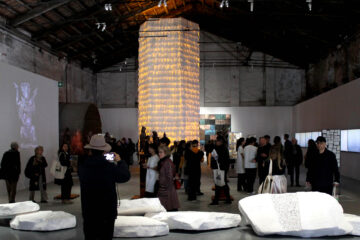
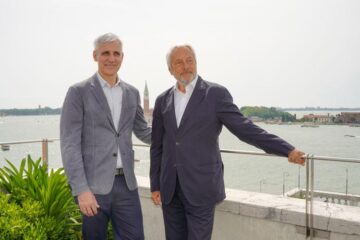
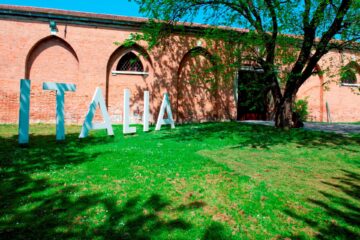
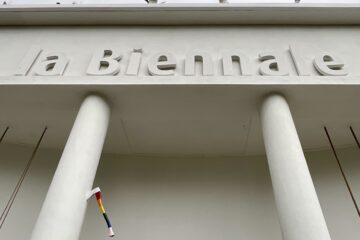

No Comment